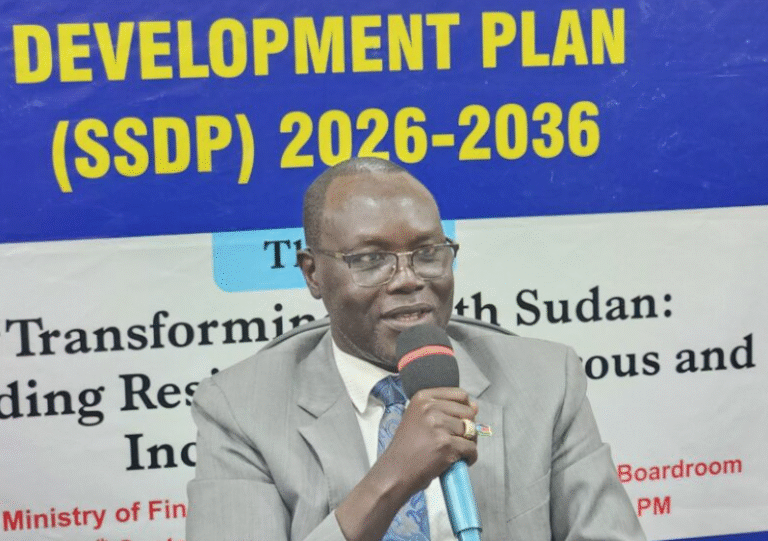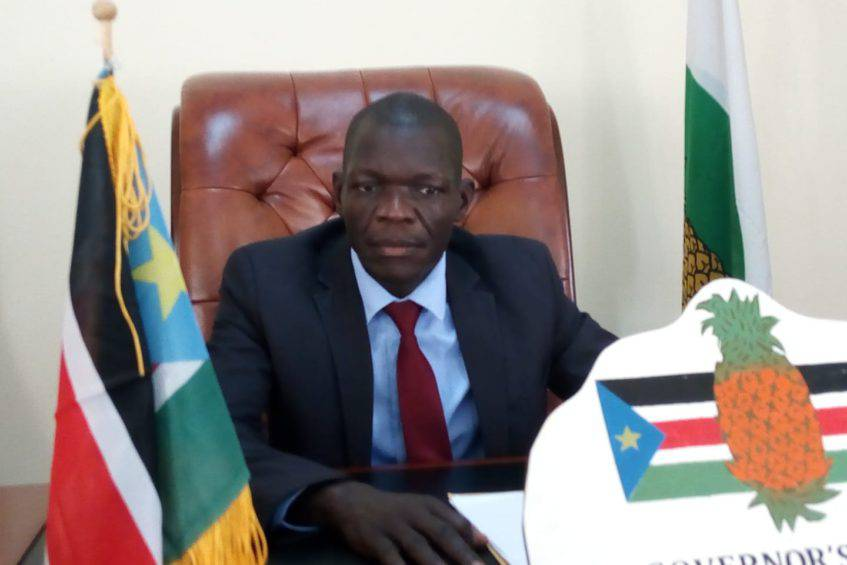
In a move seen as a bold step toward national transformation, South Sudan’s Ministry of Finance and Planning has launched a comprehensive 10-year development framework, the South Sudan Development Plan (SSDP) 2026–2036. The strategy aims to consolidate peace, boost innovation, and lay the foundations for sustainable economic growth across the world’s youngest nation. Speaking at the launch event in Juba on Wednesday, Finance Minister Athian Diing Athian described the SSDP as a watershed moment in South Sudan’s post-independence journey.
“This is more than a policy document; it is the embodiment of our collective aspirations,” said Athian. “It represents our renewed commitment to peace, inclusive growth, and long-term resilience.”
The SSDP is South Sudan’s third national development framework since gaining independence in 2011. It succeeds the original South Sudan Development Plan (2011–2013), the National Development Strategy (2018–2021), and its revised version that runs through mid-2026.
According to the finance ministry, the SSDP is structured around broad thematic pillars rather than the cluster-based models of the past. It emphasizes institutional reform, economic diversification, climate resilience, and investment in human capital.
A Collaborative Vision: Athian underscored the importance of coordinated partnerships, stressing that success hinges on collaboration between the government, development agencies, academia, civil society, the diaspora, and the private sector.
“We’re drawing from both past lessons and future possibilities. The SSDP integrates global frameworks like the Sustainable Development Goals and the African Union’s Agenda 2063,” he said.
The planning process will proceed through six phases: diagnostics, nationwide consultations, framework alignment, drafting, national validation, and final endorsement—expected by June 2026. Development Against Headwinds: despite the optimism, officials acknowledged the considerable headwinds the country faces. Anita Kiki Gbeho, the United Nations’ Deputy Special Representative for South Sudan, welcomed the initiative but issued a sober reminder of South Sudan’s fragile state. “Multiple crises—humanitarian, political, economic, and security-related—continue to hamper progress,” said Gbeho. “The conflict in Sudan, worsening climate shocks, and disease outbreaks further compound vulnerabilities.” She called on the government to intensify political dialogue and fully implement the Revitalized Agreement on the Resolution of Conflict in South Sudan (R-ARCSS), warning that inclusive governance is vital to ensuring development reaches all citizens.
“The UN remains a steadfast partner in helping South Sudan build a peaceful, prosperous, and inclusive future,” she said. Institutional Memory and Execution Risks: Benjamin Ayali Koyongwa, Undersecretary for Planning at the Ministry of Finance, stressed that the SSDP is not starting from scratch. “We’re building on hard-won experience. This plan allows us to reset the trajectory of national development,” Ayali said, noting that institutions such as the UNDP, World Bank, IMF, and others are supporting the initiative. However, critics remain wary of implementation pitfalls.
Ter Manyang, a civil society advocate, voiced skepticism based on the government’s track record. “From 2006 to now, implementation has hovered around just 2%. Planning isn’t the problem—execution is,” Manyang said. “Frequent leadership reshuffles only make it worse.” He called for a concrete implementation matrix and stable governance structures to ensure continuity and accountability. A Pivotal Juncture, as South Sudan navigates a delicate post-conflict transition, the SSDP represents a crucial test of political will and institutional capacity. With international partners on board and a broad consultative process ahead, the plan holds promise—but only if promises translate into action. For a country where the gap between policy and practice has historically been wide, the coming months will reveal whether South Sudan can finally chart a path from vision to reality.

